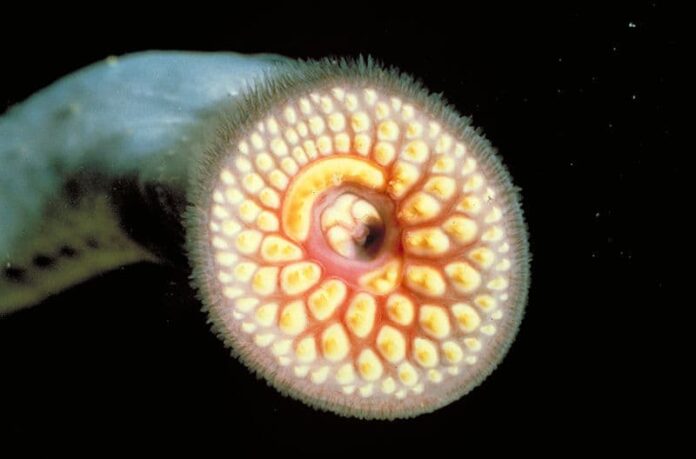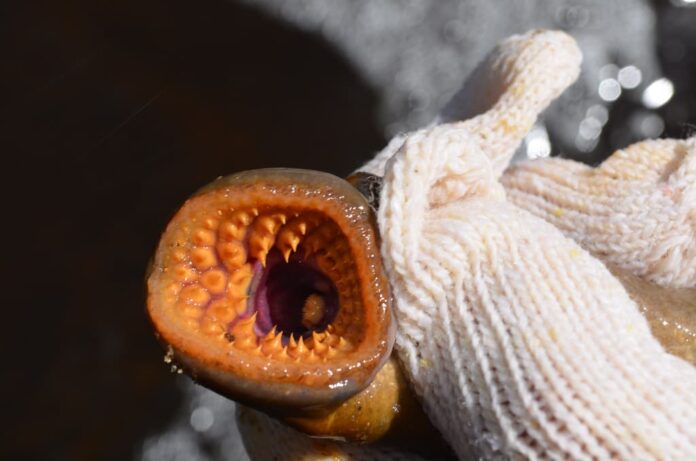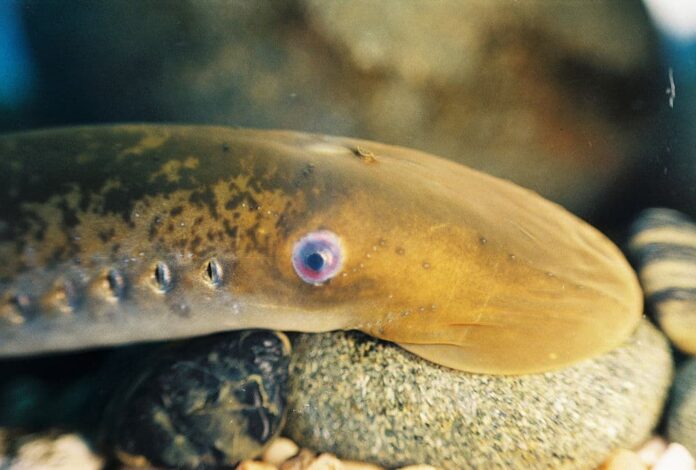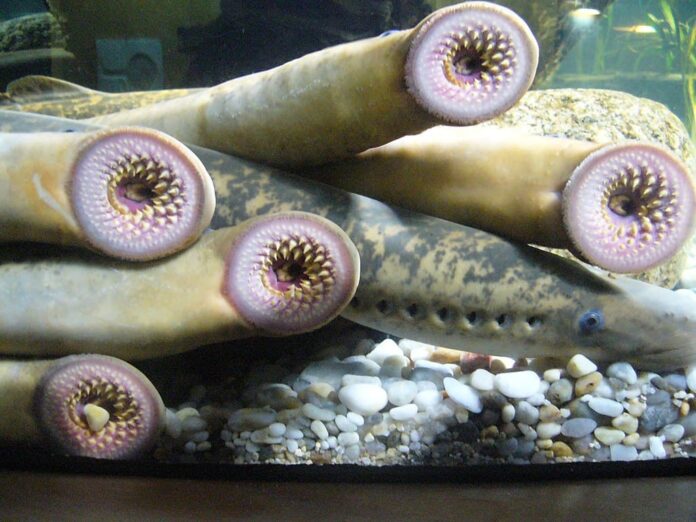Since sea lamprey looks like stuff from horror movies, it is quite hard to believe that they actually exist. In fact, these toothy creatures have been swimming the sea for over 340 million years already. As an ancient Atlantic fish with bizarre beauty, there are many fascinating about them that we don’t know about. In this article, you will get to learn several things about sea lamprey, so let’s take a look.
1Appearance

Sea lamprey is surely a fish not for the fainted heart. Despite being categorized as fish, they are far different from one. These eel-like fish have large and reddish eyes along with a single nostril on top of their head. As you can see, sea lamprey has smooth and scaleless skin that resembles that of an eel. Their skin is brown-yellow with dark blotches on the body along with lighter coloration on the belly. On their slimy bodies, there are seven gills lining in a row right behind their eye on each side. These gill openings allow them to breathe easily while attacking their prey or sucking onto their hosts.
Inside their mouth are teeth arranged in consecutive circular rows with one sharp rasping tongue in the center. Despite having rows of teeth, a sea lamprey’s mouth is round and jawless which looks like a suction cup. Besides feeding, their mouths play an important part in helping them to attach to the stones. In case they want to take a break along the way during migration from marine to freshwater, all they need is a reliable stone. This weird face structure is designed for sucking, and it also earns them the nickname “Vampire Fish”.
2Behavior

For fish, sea lampreys are aggressive toothy creatures that will latch on any swimming beings they can feed on. When it comes to feeding, they are not shy about attacking at all. In fact, these slimy predators are brave enough to go after larger fish that they can latch onto. Sea lampreys prefer fish and cold-blooded animals such as invertebrates, and that takes us off the menu. Simply put, these vampire fish are unlikely to be a threat to us humans.
Things are different with humans as these eel-like fish usually do not come after us at all. The only chance that sea lampreys would attack humans is when they are extremely starving. Although rare, they can do a lot of damage to our flesh that can last for hours, days, or weeks if they attack. The good thing is that we have the strength and strategies to remove them the moment they attack. Also, don’t worry if a group of sea lampreys would attack humans because this case has never happened before.
3Feeding & Habitat

Sea lamprey is herbivore at first as they feed only on algae and bottom debris when they are young. The moment they begin their adult stage, sea lampreys will turn into parasites. Sea lamprey will use a large mouth that is larger than their head to attach to prey. By doing so, it is able to feed on other fish with ease. They feed by attaching their alien-like mouth onto their prey and use their rough tongue to suck blood and bodily fluid. Their victims are mainly fresh and saltwater fish including herring, mackerel, salmon, trout, and even sharks. Based on observation, most of their victims will succumb to the wound.
Just like salmon, sea lamprey is considered “anadromous” which means they live in both freshwater and saltwater. You can find them in the Northern and Western Atlantic sea. Thanks to manmade shipping canals, sea lampreys eventually find their way to freshwater closer to us as well. In 1835, they made it to the Great Lakes and called it home forever since. Because of this habitat change, sea lampreys are one of the invasive species in many areas. These parasites damage the ecosystem by killing a number of native fish species. The only solution to that so far is by using chemical and electric barriers to prevent them from entering lakes and rivers.
4Predators & Threats

Sea lampreys are aggressive predators by nature which means that have a lot of advantages in some lake systems. As parasites, sometimes they don’t have predators at all which gives them the opportunity to attack native fish. However, that does not mean that the chance is zero. In fact, there are two predators that consume sea lampreys which are catfish and the Northern pike. Apart from these two, there is a chance that otters also prey on sea lampreys sometimes.
While being abundant as invasive species and parasites, sea lampreys are endangered in their native ranges. The threats to their population decline on the Atlantic coasts of Europe are dams, habitat loss, overfishing, and pollution. At the same time, climate changes also affect the growth, bioenergetics, and phenology of the sea lampreys as well.
Related Post: Vampire Deer With Fangs




